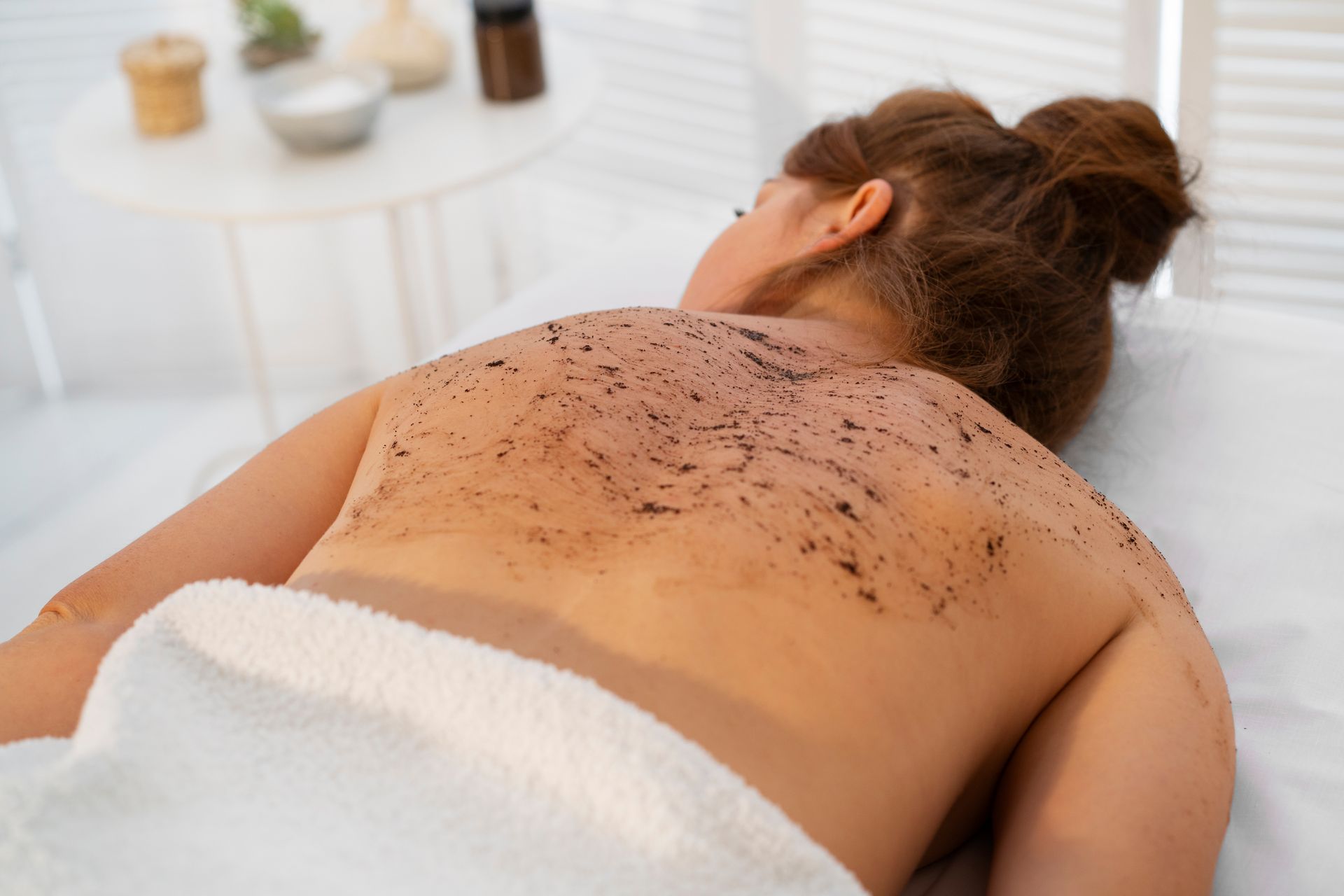The Future of Laser Hair Removal Technology
In the world of beauty and grooming, laser hair removal has been making waves. If you've been paying attention, you've probably noticed more and more people turning to this innovative method. Why? Well, it's a modern solution for bidding farewell to those persistent, unwanted hairs, leaving traditional razors and waxing in the dust.
But here's where it gets even more interesting: Our focus here isn't just on the present. We're setting our sights on the future of laser hair removal, where
exciting advancements are on the horizon. These developments promise to make the process even more effective and user-friendly. So, get ready to dive into the world of tomorrow's hair removal technology!
The Evolution of Laser Hair Removal
Laser hair removal, although now a common and effective method for
achieving smooth, hair-free skin, had humble beginnings in the mid-20th century. The concept of using lasers to target hair follicles dates back to the 1960s, when scientists began exploring the potential of lasers in medical applications.
The first laser hair removal experiment took place in 1960 when a ruby laser was used to treat hair. However, this early attempt was not practical for large-scale use due to the limitations of the technology and the risk of scarring. The breakthrough came in the 1990s when advanced lasers specifically designed for hair removal, like the alexandrite and diode lasers, were introduced.
These newer lasers were safer and more effective, primarily because they could selectively target the melanin in hair follicles while leaving the surrounding skin undamaged. This discovery revolutionized the field of hair removal, paving the way for the development of modern laser hair removal devices.
Current State of Laser Hair Removal
Modern laser hair removal has come a long way from its early days. Today, it is a highly sophisticated and widely practiced cosmetic procedure. Here's a breakdown of the technology and methods currently used:
1. Laser Types: Several laser types are used for hair removal, including diode, alexandrite, Nd:YAG, and ruby lasers. Each laser has specific advantages depending on a
person's skin type, hair color, and treatment area. For instance, the Nd:YAG laser is effective for darker skin tones, while the alexandrite laser is excellent for lighter skin and hair.
2. Selective Photothermolysis: This is the key principle behind laser hair removal. It involves using lasers that emit a specific wavelength of light that is absorbed by the melanin in the hair follicle. When the melanin absorbs the laser energy, it generates heat, which damages the follicle, inhibiting future hair growth while leaving the surrounding skin unharmed.
3. Cooling Systems: Many contemporary laser devices incorporate cooling systems, such as a cooling spray or a built-in cooling tip, to minimize discomfort and protect the skin's surface during treatment.
4. Advanced Techniques: Laser practitioners today use advanced techniques like "moving" or "sliding" the laser handpiece over the skin to cover larger treatment areas more quickly and evenly.
5. Customized Treatment Plans: Experienced practitioners create personalized treatment plans based on the individual's skin type, hair color, and the area being treated.
Emerging Trends and Innovations
In recent years,
laser hair removal technology has undergone remarkable advancements, revolutionizing cosmetic procedures by enhancing efficiency, safety, and accessibility. Notable progress includes the refinement of laser systems for greater precision, minimizing the risk of skin damage and side effects. Innovations like picosecond lasers, originally designed for tattoo removal, have extended their utility to hair removal, reducing discomfort and broadening the range of suitable skin types.
Diode lasers, recognized for their
effectiveness across diverse skin and hair types, now benefit from improved cooling mechanisms, enhancing treatment comfort. Alexandrite lasers, ideal for lighter skin and hair, are being fine-tuned for even greater precision. The emergence of combination treatments, coupling laser hair removal with radiofrequency or intense pulsed light (IPL) therapies, has yielded superior outcomes for challenging hair and skin combinations.
Enhancing the patient experience is a priority, with some devices offering nearly painless treatments through enhanced cooling systems and optimized laser settings. Personalized treatment plans, facilitated by advanced imaging and diagnostic tools, ensure each patient receives tailored, effective, and safe care based on their unique skin and hair characteristics. Safety remains paramount, with laser systems incorporating features like real-time skin temperature monitoring and automatic shut-off mechanisms to minimize adverse effects.
The market for home-use laser hair removal devices is growing, offering a convenient option for maintenance between
professional sessions. Moreover, ongoing research aims to prolong treatment results, potentially leading to even longer-lasting or permanent hair reduction. These collective efforts demonstrate an unwavering commitment to enhancing the effectiveness and overall satisfaction of laser hair removal treatments.
Advantages of Future Laser Hair Removal Technology
When we consider what the future holds for laser hair removal, it is easy to see how remarkably beneficial these developments will be for consumers. Here, we delve into these
potential advantages, which encompass improved precision, reduced discomfort, faster treatments, and important cost considerations.
1. Enhanced Precision: One of the foremost advantages lies in the realm of precision. Future laser hair removal technology promises to be even more precise than current systems. This means that it can target hair follicles with pinpoint accuracy, leaving the surrounding skin untouched. As a result, the risk of side effects and skin irritation is significantly reduced. Consumers can expect treatments that are not only more effective but also safer, making the process even more appealing.
2. Reduced Discomfort:
Another exciting development on the horizon is the reduction in discomfort during laser hair removal treatments. While modern devices are already
much less painful compared to earlier iterations, future technologies aim to make the experience virtually painless. Improved cooling systems and optimized laser settings will contribute to a more comfortable and tolerable treatment experience. This will undoubtedly encourage more individuals to explore laser hair removal as a convenient and hassle-free option.
3. Faster Treatments: Future laser hair removal technology is set to offer faster treatment sessions. Currently, the process can be time-consuming, particularly for larger areas of the body. However, emerging innovations in laser delivery and scanning systems will enable practitioners to cover larger areas more quickly and evenly. This efficiency will not only save consumers time but also reduce the duration of each session, making laser hair removal even more convenient.
4. Cost Considerations: While the initial cost of laser hair removal may seem high, it's essential to consider the long-term financial benefits. Future advancements may lead to more affordable treatments. Also, the reduction in discomfort and the need for fewer sessions due to enhanced effectiveness can contribute to cost savings over time. Consumers should view laser hair removal as an investment in long-term hair reduction, which can ultimately reduce the ongoing expenses associated with traditional hair removal methods.
Challenges and Concerns
As we peer into the future of laser hair removal technology, it's important to recognize that progress often brings its own set of challenges and concerns. Here, we look at
some of the key obstacles associated with upcoming advancements, including safety concerns, potential side effects, and regulatory issues.
One of the foremost concerns regarding future laser hair removal technology is safety. While current devices are generally safe when operated by trained professionals, any advancements should prioritize maintaining or improving safety standards. The introduction of new technologies or techniques must undergo rigorous testing to ensure they don't pose unforeseen risks to patients, such as
skin damage or
adverse reactions.
Even though laser hair removal is known for its relatively low risk of side effects compared to other methods, future innovations could potentially introduce new side effects. Patients and practitioners should be prepared for the possibility of side effects such as skin redness, swelling, temporary pigmentation changes, or, in rare instances, scarring. Adequate measures for prevention, mitigation, and patient education will be essential to address these concerns effectively.
The regulatory landscape for cosmetic procedures, including laser hair removal, is subject to ongoing changes and can vary by region. As technology advances, regulatory bodies must adapt to ensure that new devices and techniques meet safety and efficacy standards. Regulatory guidelines should be updated and enforced to keep pace with innovations and maintain consumer confidence and safety.
The introduction of advanced technologies may necessitate enhanced operator training to ensure safe and effective treatments.
Practitioners must be well-versed in operating new equipment and understanding potential differences in treatment protocols. Comprehensive training programs and certification standards should be established to address this concern.
While technological advancements often lead to improved treatments, they can also result in higher costs. Accessibility to these advanced laser hair removal treatments must be considered to ensure that a broader demographic can benefit. Striking a balance between innovation and affordability will be essential.
As technology evolves, ethical considerations may emerge. These include responsible marketing, patient consent, and the ethical use of technology in beauty and aesthetics. Clear ethical guidelines and industry standards should be established to ensure that these advancements are employed ethically and responsibly.
Patient Experience and Comfort
Future developments in laser hair removal technology and technique promise improved results for patients. Patient comfort is a central focus, and future technology seeks to address this in several ways. First, pain management techniques are expected to evolve significantly. While modern devices have already reduced the discomfort associated with earlier methods, the next generation of laser systems aims to make treatments virtually painless. This may be achieved through improved cooling systems that prevent the skin from overheating during the procedure, advanced numbing agents, or innovative laser settings that reduce the sensation of heat and pain. Such developments will not only make laser hair removal more comfortable but also encourage a broader demographic to consider it as a convenient, hassle-free option for hair removal. Ultimately, the future of laser hair removal technology aspires to prioritize patient comfort while delivering
long-lasting and effective results.
Future Market Trends
The laser hair removal industry is poised for significant growth in the coming years, driven by several key market trends. Primarily, there is a growing and sustained demand for laser hair removal as individuals increasingly seek
long-term solutions for hair removal. The appeal lies in the convenience, effectiveness, and reduced maintenance compared to traditional methods.
Accessibility and affordability are also anticipated to improve. Laser hair removal is likely to become more accessible to a wider demographic through various means, including lower pricing structures, flexible payment plans, and the availability of user-friendly home-use devices. This increased accessibility will make laser hair removal a viable option for a broader spectrum of individuals.
The also-growing industry may expand into emerging markets and regions where laser hair removal is currently less prevalent. As
awareness of the benefits of laser hair removal grows and technology becomes more accessible, demand in these areas is expected to rise.
Sustainability is another emerging trend. With a growing emphasis on environmentally responsible practices, the industry may see a shift toward more eco-friendly practices, such as energy-efficient devices and responsible waste management.
In terms of competition and pricing, the expanding market may lead to more competitive pricing, offering consumers a range of options and package deals. This competitive landscape will contribute to making laser hair removal a more budget-friendly choice for those seeking effective and long-lasting hair removal solutions.
Conclusion
In this exploration of the future of laser hair removal technology, we've traversed a landscape of innovation and transformation. From the humble beginnings of laser hair removal to its current precision and convenience for consumers, we've witnessed its evolution. Looking forward, emerging trends promise to reshape the field with enhanced patient comfort and accessibility. The potential positive impact on consumers is substantial, with advancements aiming to provide virtually painless treatments and greater affordability. As we embrace these changes, we invite readers to stay informed about the exciting advancements in this field, which have the potential to revolutionize how we approach hair removal, offering a convenient, effective, and long-lasting solution for all.
BOOK YOUR FREE SESSION










